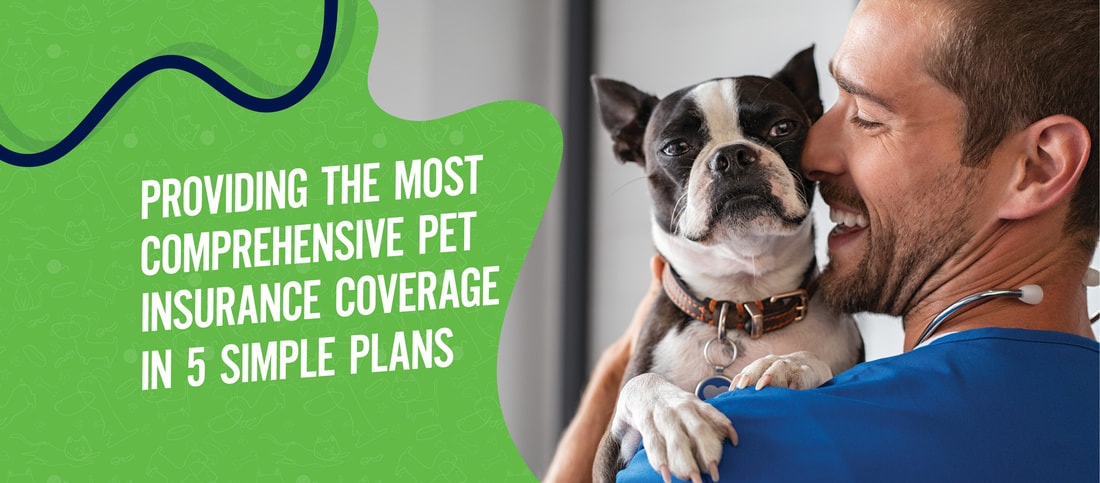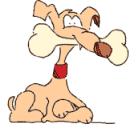Bones: What Do They Mean To Dogs?
by Dr Melvyn Greenberg Accredited Animal Behaviour Consultant (ABC of SA™)
Dem bones, dem bones…..there has been serious debates about the advantages and disadvantages of giving bones to dogs whether for health purposes or as therapy for the prevention or control of behaviour disorders.
There is one certainty: never feed cooked bones! The cooking process destroys the resilience of the bone composition. During the chewing process the cooked bone can break into sharp fragments increasing the risk of penetrating the bowel once ingested. The intestinal seepage can cause peritonitis (sepsis of the abdominal lining) resulting in expensive complicated surgery with potential for fatal complications.
Some cooked bones that are easily broken into smaller round or irregular pieces can become lodged in the oesophagus or intestine also requiring emergency surgical intervention.
Often cooked ribs get wedged across the dog’s palate after a serious crushing bite onto the bone. The piece of rib gets to lie against the roof of the mouth between the upper molars and the dog will frantically attempt to dislodge it, in vain. Salivation and distress normally alerts the owner to visit the veterinarian. If the rib section is wedged for a lengthy period the odour from halitosis and reluctance to eat is a sure warning sign. At the veterinarian the mouth is usually gagged open and the piece removed with a forceps. Sometimes butchers sell small circular sections of bone cut from long bones with a single saw blade incision on the one side so that it resembles a closed C-shape. These pieces often get wedged over the molars in the lower jaw, also requiring veterinary help.
A dog with a bone lodged in the oral cavity can, in certain areas of the country, put the chill up the spine of animal professionals due to the similarities of symptoms to a certain stage of Rabies.
Pets should be given bones that are large and heavy in proportion to the breed size and must be fed raw, after meat and fat have been trimmed off. The full femur of an ox is fine for a large breed while the femur of a lamb would be suitable for a small dog. Once bones are whittled down close to a size that may be swallowed they should be discarded.
Some dogs cannot digest bones efficiently and develop concrete-like constipation requiring hospitalization, intravenous drips, enemas and laxatives.
Some dogs are allergic to certain bones and may develop vomiting, diarrhoea and/or skin allergies.
Chewing is a natural function and with certain individuals in some breeds this behaviour needs to be sated in an attempt to prevent destructiveness, boredom and anxiety. While bones keep dogs occupied for lengthy periods it is not a total cure to prevent all forms of behaviour problems.
Most pups are very curious with their mouths and will seek items to play with, gnaw on or obtain a frisson when it breaks into fragments. This is a time when bones play an important role in stimulation. In multi-canine households fighting over bones has to be avoided so some of the approaches to this include:
applying, immediate professional advice from a veterinarian, dog trainer or an animal behaviourist the dog’s life and the human-animal bond may be saved.
Dogs chew on bones also for self-gratification. Some dogs seem to be in a rhythmic trance while gnawing endlessly at a section of the bone. There is no doubt that the endorphins in the brain are released in the mastication process to create such satisfaction when the gnawer gnaws the “gnawee”.
Bones are an attractive stimulating item that may keep puppies and some adult dogs busy while their owners are away from the house for several hours. The preoccupation often is a diversion enough to prevent or control separation anxiety. However, the bones must be picked up, cleaned and refrigerated when the pet owners return. If a dog is mesmerised with its bone it will not have the same desire for excessive vocalization or destructiveness.
When people want their dogs to get out of the house the use of bones can be an incredible incentive to happily remain outdoors without sensing the need to be with its owners. This can repetitively condition dogs to want to go outside and be on their own. This attitude increases canine coping skills and reduces independence on humans. If applied early on in the puppy’s life and bone is an appropriate motivational tool it can prevent separation anxiety.
Those dog owners who never feed bones to their pets must be cognisant of guests who may not know this ruling. From time to time veterinarians receive a history of a dog surreptitiously fed bones and meat at a home braai by a brain-dead bunny-hugging person which may lead to the pet dog having a bowel obstruction a few days later. If pet owners never feed bones to their dogs they should announce this to their visitors or rather board the animals off the property until the function is over and the area is scanned for inadvertently left remains of the barbecue.
Some dogs will swallow a bone in an attempt to prevent other dogs having access to it. Most dogs learn from puppy-hood how to eat on bones while a small number of them fail to do so and end up in trouble. Chicken bones have never been blamed for obstructions although the thin, sharp tibia bone adjacent to the drumstick looks potentially dangerous. The most dangerous bones are the T-bones.
Giving a newly acquired pup the privilege of a bone to chew on in the same territory as an established adult dog may be the trigger reason for the young tyke to be killed. Be aware of canine instincts! The same outcome may occur if the puppy walks past the adult dog’s food bowl when the introduction of the newcomer has not been carried out correctly.
If dogs fight over bones and people insist on giving it to them the pets should be placed in separate safe areas of the house; preferably where the bones cannot be buried and dug up at a later stage.
It is also a fallacy that bones keep dogs’ teeth clean; in fact, it is more likely to break or wear down their teeth in the process, over a certain period of time. The genetics of certain breeds will mostly determine the damage to their teeth. If a dog has a “soft mouth” i.e. a gentle approach to holding objects in its mouth as one would expect from Labradors and Golden Retrievers then it is unlikely to damage its teeth irrespective what item it chooses to chew on. However, in breeds such as a Staffordshire Bull Terrier that has a “hard mouth” it will destroy its dentition even on a tennis ball.
Maybe knick-knack paddy-wack did give a dog a bone; and the old man came rolling home when he had to pay the veterinary bills…
There is one certainty: never feed cooked bones! The cooking process destroys the resilience of the bone composition. During the chewing process the cooked bone can break into sharp fragments increasing the risk of penetrating the bowel once ingested. The intestinal seepage can cause peritonitis (sepsis of the abdominal lining) resulting in expensive complicated surgery with potential for fatal complications.
Some cooked bones that are easily broken into smaller round or irregular pieces can become lodged in the oesophagus or intestine also requiring emergency surgical intervention.
Often cooked ribs get wedged across the dog’s palate after a serious crushing bite onto the bone. The piece of rib gets to lie against the roof of the mouth between the upper molars and the dog will frantically attempt to dislodge it, in vain. Salivation and distress normally alerts the owner to visit the veterinarian. If the rib section is wedged for a lengthy period the odour from halitosis and reluctance to eat is a sure warning sign. At the veterinarian the mouth is usually gagged open and the piece removed with a forceps. Sometimes butchers sell small circular sections of bone cut from long bones with a single saw blade incision on the one side so that it resembles a closed C-shape. These pieces often get wedged over the molars in the lower jaw, also requiring veterinary help.
A dog with a bone lodged in the oral cavity can, in certain areas of the country, put the chill up the spine of animal professionals due to the similarities of symptoms to a certain stage of Rabies.
Pets should be given bones that are large and heavy in proportion to the breed size and must be fed raw, after meat and fat have been trimmed off. The full femur of an ox is fine for a large breed while the femur of a lamb would be suitable for a small dog. Once bones are whittled down close to a size that may be swallowed they should be discarded.
Some dogs cannot digest bones efficiently and develop concrete-like constipation requiring hospitalization, intravenous drips, enemas and laxatives.
Some dogs are allergic to certain bones and may develop vomiting, diarrhoea and/or skin allergies.
Chewing is a natural function and with certain individuals in some breeds this behaviour needs to be sated in an attempt to prevent destructiveness, boredom and anxiety. While bones keep dogs occupied for lengthy periods it is not a total cure to prevent all forms of behaviour problems.
Most pups are very curious with their mouths and will seek items to play with, gnaw on or obtain a frisson when it breaks into fragments. This is a time when bones play an important role in stimulation. In multi-canine households fighting over bones has to be avoided so some of the approaches to this include:
- Teaching puppies to take bones gently from people. Dogs that grab with great speed may be obsessed and may be exhibiting the first stage of possessive aggression. The correct way of curtailing this is by seeking advice from a reputable dog trainer and subscribing to puppy socialization classes
- To offer a greater number of bones than the number of puppies or dogs so that possession is mostly impossible
applying, immediate professional advice from a veterinarian, dog trainer or an animal behaviourist the dog’s life and the human-animal bond may be saved.
Dogs chew on bones also for self-gratification. Some dogs seem to be in a rhythmic trance while gnawing endlessly at a section of the bone. There is no doubt that the endorphins in the brain are released in the mastication process to create such satisfaction when the gnawer gnaws the “gnawee”.
Bones are an attractive stimulating item that may keep puppies and some adult dogs busy while their owners are away from the house for several hours. The preoccupation often is a diversion enough to prevent or control separation anxiety. However, the bones must be picked up, cleaned and refrigerated when the pet owners return. If a dog is mesmerised with its bone it will not have the same desire for excessive vocalization or destructiveness.
When people want their dogs to get out of the house the use of bones can be an incredible incentive to happily remain outdoors without sensing the need to be with its owners. This can repetitively condition dogs to want to go outside and be on their own. This attitude increases canine coping skills and reduces independence on humans. If applied early on in the puppy’s life and bone is an appropriate motivational tool it can prevent separation anxiety.
Those dog owners who never feed bones to their pets must be cognisant of guests who may not know this ruling. From time to time veterinarians receive a history of a dog surreptitiously fed bones and meat at a home braai by a brain-dead bunny-hugging person which may lead to the pet dog having a bowel obstruction a few days later. If pet owners never feed bones to their dogs they should announce this to their visitors or rather board the animals off the property until the function is over and the area is scanned for inadvertently left remains of the barbecue.
Some dogs will swallow a bone in an attempt to prevent other dogs having access to it. Most dogs learn from puppy-hood how to eat on bones while a small number of them fail to do so and end up in trouble. Chicken bones have never been blamed for obstructions although the thin, sharp tibia bone adjacent to the drumstick looks potentially dangerous. The most dangerous bones are the T-bones.
Giving a newly acquired pup the privilege of a bone to chew on in the same territory as an established adult dog may be the trigger reason for the young tyke to be killed. Be aware of canine instincts! The same outcome may occur if the puppy walks past the adult dog’s food bowl when the introduction of the newcomer has not been carried out correctly.
If dogs fight over bones and people insist on giving it to them the pets should be placed in separate safe areas of the house; preferably where the bones cannot be buried and dug up at a later stage.
It is also a fallacy that bones keep dogs’ teeth clean; in fact, it is more likely to break or wear down their teeth in the process, over a certain period of time. The genetics of certain breeds will mostly determine the damage to their teeth. If a dog has a “soft mouth” i.e. a gentle approach to holding objects in its mouth as one would expect from Labradors and Golden Retrievers then it is unlikely to damage its teeth irrespective what item it chooses to chew on. However, in breeds such as a Staffordshire Bull Terrier that has a “hard mouth” it will destroy its dentition even on a tennis ball.
Maybe knick-knack paddy-wack did give a dog a bone; and the old man came rolling home when he had to pay the veterinary bills…






